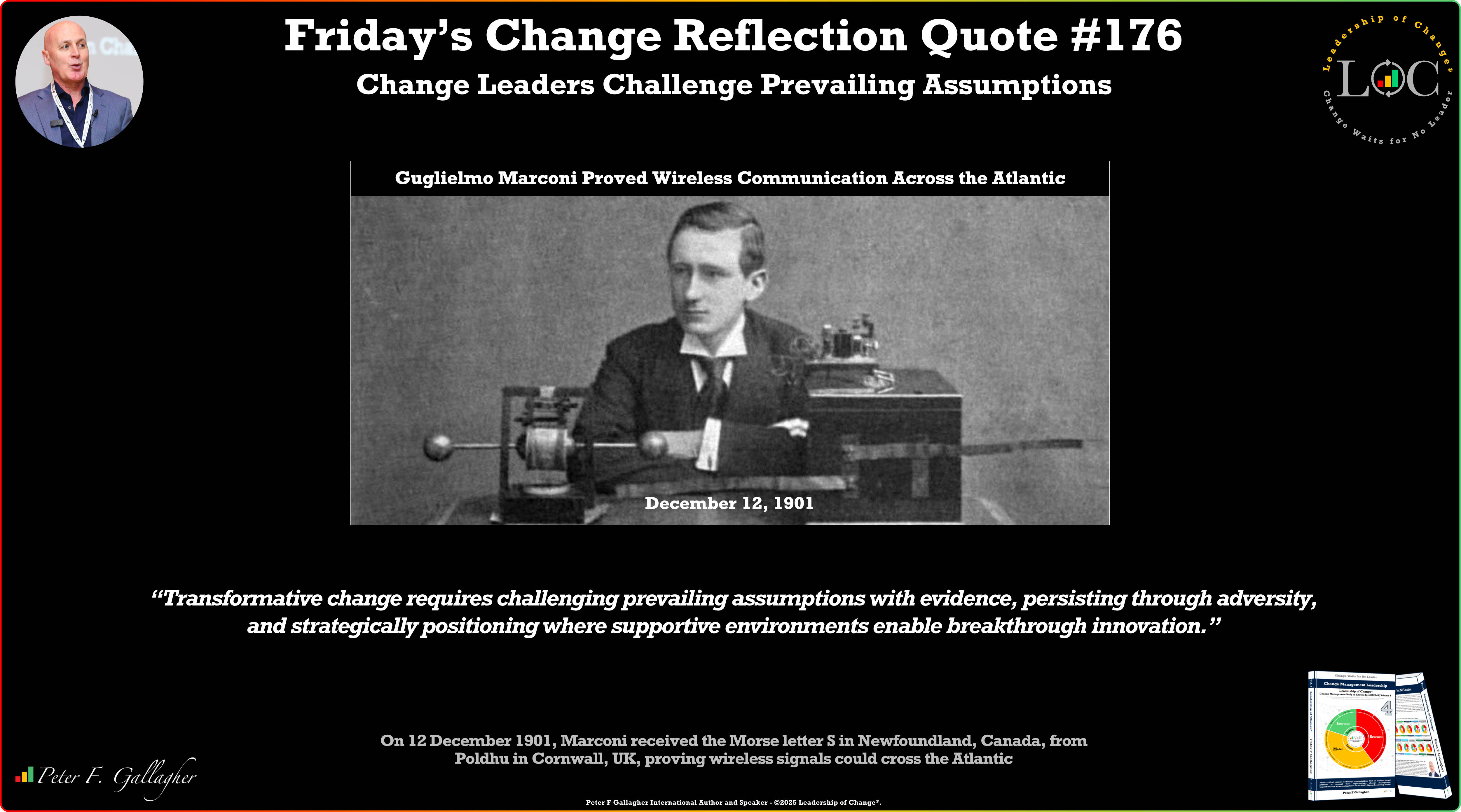Organizations don’t struggle because they lack data, they struggle because teams interpret performance differently. When finance, operations, and leadership work from competing definitions of success, even the best systems fail. True transformation starts with a shared performance model.
Change Leaders Challenge Prevailing Assumptions. Transformative change requires challenging prevailing assumptions with evidence, persisting through adversity, and strategically positioning where supportive environments enable breakthrough innovation.
Top 10 Leadership and Management links of the week, curated by Corix Partners Founder and CEO JC Gaillard, focusing on cyber security of course, but also a large cross section of subjects including digital transformation, emerging tech, ESG governance and the future of work.
Insurance companies are increasingly adopting claims automation to transform their operations. While speed and cost are often highlighted benefits, the advantages extend much further. Understanding these can help insurers make informed decisions about technology investments.
AI chips (GPUs, ASICs, FPGAs) drive modern intelligence, but at a high ecological cost (e-waste, energy consumption). Sustainability is now a core economic mandate, pushing innovation in liquid cooling and circular economy models.
The digital acceleration, catalyzed by the rapid changes observed during the COVID-19 period, has shifted the CMO's core agenda from general digital adoption to a necessary systemic integration of advanced technology, specifically culminating in Artificial Intelligence (AI) as the paramount priority
❓ What if your overwhelm isn’t caused by the world speeding up… but by something happening inside you? Before we try to manage stress, optimize productivity, or restructure our schedules, there’s a deeper layer most people overlook: inner coherence. This first article in the series explores why cal
The TPU is an ASIC specialized for AI matrix math. It uses a systolic array to enable large-scale, energy-efficient training via TPU Pods. This hardware is essential for accelerating complex Agentic AI workflows and providing the necessary compute power for pursuing AGI.
In 2026, both entrepreneurs — regardless of whether their business carries their own name — and corporate professionals will increasingly understand that managing their personal brand is their most strategic asset.
Personal Branding Predictions for 2026. By Monica Couttolenc, Executive & Career Coach
Change does not scale through frameworks alone. It scales when leaders grow in clarity, steadiness, and collective awareness. Explore why self-leadership is the true multiplier of change, and how PEC helps leaders create the rhythm others follow.
Top 10 Leadership and Management links of the week, curated by Corix Partners Founder and CEO JC Gaillard, focusing on cyber security of course, but also a large cross section of subjects including digital transformation, emerging tech, ESG governance and the future of work.
Change Leaders Prioritise Societal Needs ~ Peter F. Gallagher. Change leadership demands courage to intervene, recognising economic reality and failure, restoring trust, and aligning governance with reality and societal needs.
A short reflection on why strategy fails when annual planning becomes a spreadsheet exercise — and how outcome-driven planning brings clarity, alignment, and real strategic focus.
Solar has already reshaped global energy — but the next decade will be even more transformative. With breakthrough efficiencies, new business models, and smarter grids, solar is entering its second sunrise. Here’s what leaders need to know — and why it matters.
A practical briefing for leaders heading into 2026. Morris Misel outlines the forces reshaping the year ahead, the ripple effects across industries and a simple diagnostic to assess organisational readiness. A clear, human centred guide to making better decisions in a time of acceleration and pressu
The article argues that the path to AGI is driven by a competitive "Trilemma." OpenAI demands reliability; Trainium3 brings cost efficiency (50% cut); Mistral Large 3 offers open-source intelligence. These forces build the necessary ecosystem for autonomous Agentic AI.
Selecting the right executive coach can be one of the most powerful investments you make in your leaders—and your organization. The right match accelerates growth, sharpens decision-making, and strengthens the leadership pipeline. Here's how to ensure you select the right coach.
Asked recently, "Grand Dave, what do you do?" I started to explain teaching Supply Chain and realised I need to be able to answer this question. So I have sat down and thought about it, here is my attempt. What have I missed? What would you recommend? What would you say?
When teams execute at high speed without strategic clarity, momentum becomes misdirection. This article explores why clarity must precede speed to avoid chaos in leadership.
 Data Isn’t the Problem. Alignment Is.
Data Isn’t the Problem. Alignment Is. Friday’s Change Reflection Quote - Leadership of Change - Change Leaders Challenge Prevailing Assumptions
Friday’s Change Reflection Quote - Leadership of Change - Change Leaders Challenge Prevailing Assumptions The Corix Partners Friday Reading List - December 12, 2025
The Corix Partners Friday Reading List - December 12, 2025 Measuring the True ROI of Automated Claims Processes: Beyond Speed and Cost
Measuring the True ROI of Automated Claims Processes: Beyond Speed and Cost The New Silicon Frontier: Specialization and the Diverse Landscape of AI Chips
The New Silicon Frontier: Specialization and the Diverse Landscape of AI Chips